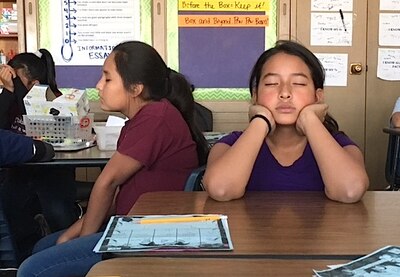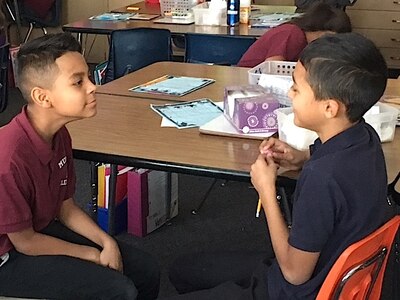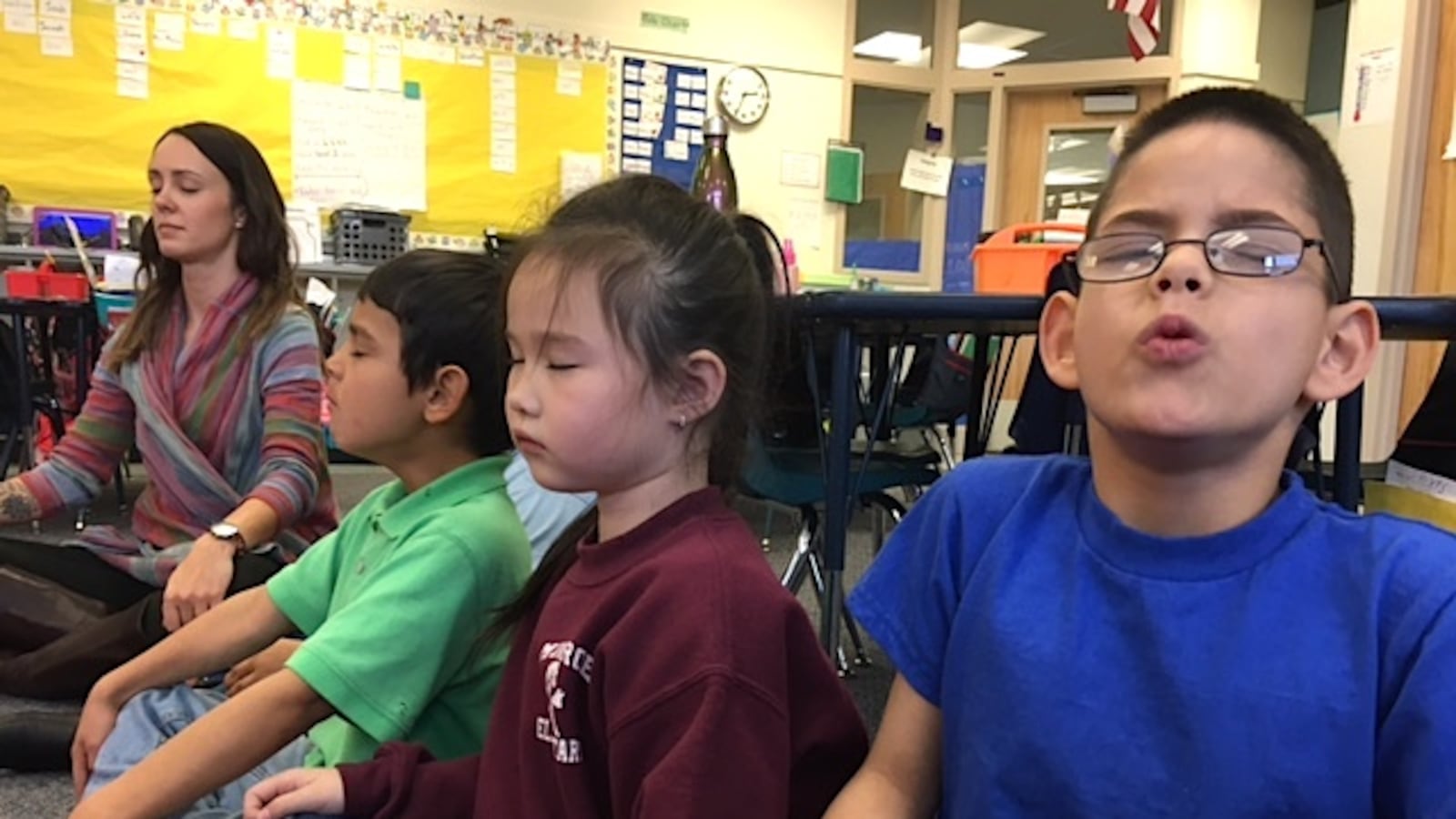On a recent Thursday afternoon, school psychologist Amy Schirm stood before two-dozen fifth-graders in a classroom at Denver’s Munroe Elementary School. Piano music played softly in the background and a string of white holiday lights twinkled on the wall behind her.
“Close your eyes,” Schirm said. “I’m going to ring the bell three times. Just focus all your attention on the sound.” She struck a small metal bowl with a mallet.
“Let your body kind of feel heavy, like you’re sinking down into your chair,” she said. “Just take a minute to check in with yourself. How are you doing in this moment?”
The students were practicing mindfulness — concentrating on their present thoughts, emotions and environment. The concept is catching on in schools in Colorado and nationwide as a way to help students better focus their attention, process their emotions and develop compassion.
Advocates say mindfulness can be especially valuable in high-poverty schools such as Munroe, where many students face difficult home lives and need strong social and emotional skills.
Nearly all the students Schirm was addressing that afternoon followed her instructions intently, some with eyes serenely closed and others with hoods pulled low over their faces. `
“We’re constantly telling kids to pay attention, but we never teach them how, or what that means,” said Schirm, who spearheaded the school’s foray into mindfulness last year.

Mindfulness fills that gap, helping kids tune in to instruction and their own emotional lives.
At least 40 Denver schools are weaving mindfulness into the school day, district officials say. Last year, DPS began offering staff trainings on the topic and purchased two mindfulness curriculums: MindUP for elementary students and Learning to Breathe for secondary students.
“We’re definitely moving in a direction where we’re realizing and acknowledging that social emotional learning is essential to academic success,” said Meredith Furtney, supervisor of the district’s department of social work and psychological services.
Munroe teacher Fallon Newman said she’s seen a big difference in her students since introducing mindfulness, both through “mindful minutes” each morning and during Schirm’s Thursday afternoon visits.
They’re more articulate about how they’re feeling and better able to cope with stress. That means more time for learning instead of hours given over to pent-up emotion, Newman said.
She’s also noticed a greater sense of empathy among students. A glimpse of that came during Schirm’s recent lesson when she had students pair up and gaze intently at their partners.
There were giggles and some students said they felt silly, but there were also moments of connection.

“I felt like I know the things she knows,” said one girl, as the class debriefed.
Newman said some of her students have also become more attuned to her. She experienced it on a recent day when she temporarily took on seven fifth-graders from another class in addition to her own 26.
One of her students asked a surprising question: Was she feeling anxious about supervising the extra kids?
Newman admitted that she was a little apprehensive about the bigger group.
The boy responded, “OK, I’ll be on my best behavior.”
It was a heart-warming sign that mindfulness is paying off.
“It’s powerful stuff,” Newman said.
For some Munroe students, the practice instills a sense of calm that is often lacking in their lives. Take Chris, a fifth-grader with an impish smile who joined Schirm as she headed to a first-grade class to lead a brief mindfulness lesson last week.
For a long time, he’d been disruptive and noisy during such lessons in his own classroom. When Schirm finally asked why it was so hard for him, he told her he wasn’t used to the quiet.
Chris has an easier time of it now. In the first grade classroom, he stood tall in front of his smaller schoolmates, opening and closing a big expandable ball in time with their slow breaths.
At the 135-student charter school Carbondale Community School, the nudge toward mindfulness came last year from the school’s wellness committee. A teacher who was studying the practice as part of her graduate program led the charge.
Principal Tom Penzel said students and staff circle up in the commons area at the beginning of each week for a 15-minute “Mindful Monday” session. There’s a few minutes of guided meditation and then maybe a discussion about real-life scenarios where mindfulness could come in handy.
Examples include how to react when the least athletic kid wants to join the game or what to do when you feel a flash of anger toward a classmate. Penzel said it was students who asked that more time to be devoted to such scenarios.
“I’ve been amazed over time how much the kids are bought into it,” he said.

